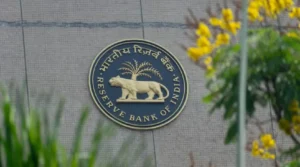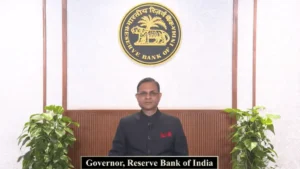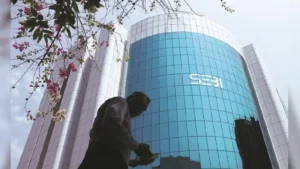Public Sector Banks (PSBs) in India have shown remarkable financial improvement, as reflected in their highest-ever net profits and a significant rise in dividend payouts. In the financial year 2023-24 (FY24), the dividend payout by PSBs surged by 33% to Rs 27,830 crore, up from Rs 20,964 crore in the previous fiscal year (FY23). This remarkable growth highlights the strengthened financial position of these banks and their ability to return value to shareholders, including the Indian government, which holds a majority stake in these institutions.
Increase in Dividend Payouts: A Positive Indicator
According to government data, PSBs declared a total dividend of Rs 27,830 crore in FY24, reflecting an increase of 32.7% compared to FY23. Of this total amount, nearly 65% or Rs 18,013 crore was paid to the Indian government, reinforcing the role of PSBs in contributing to national revenue.
In comparison, during FY23, the government received Rs 13,804 crore in dividends from PSBs, including the State Bank of India (SBI), indicating a substantial year-on-year improvement.
Record-Breaking Profitability of PSBs
The increase in dividend payouts is directly linked to the robust financial performance of PSBs. The 12 public sector banks collectively recorded their highest-ever net profit of Rs 1.41 lakh crore in FY24, compared to Rs 1.05 lakh crore in FY23. This massive improvement underscores a strong turnaround from the previous years of financial distress.
For the first nine months of FY24 alone, PSBs had already earned Rs 1.29 lakh crore, demonstrating consistent profitability and efficiency in operations.
SBI Leads the Growth Trajectory
Among PSBs, the State Bank of India (SBI) emerged as the leading contributor to this record-breaking performance. SBI alone accounted for over 40% of the total profit earned by PSBs, with a net profit of Rs 61,077 crore in FY24, marking a 22% increase from Rs 50,232 crore in FY23.
SBI’s consistent growth reflects its strong market position, effective risk management strategies, and expansion in retail and digital banking services.
Exceptional Profit Growth Among Key PSBs
While SBI led in absolute numbers, several other PSBs recorded significant growth in percentage terms:
- Punjab National Bank (PNB) witnessed the highest growth rate, with net profit surging 228% to Rs 8,245 crore.
- Union Bank of India followed with a 62% rise in net profit to Rs 13,649 crore.
- Central Bank of India saw its net profit grow 61% to Rs 2,549 crore.
Other PSBs that recorded impressive net profit growth include:
- Bank of India – 57% growth to Rs 6,318 crore.
- Bank of Maharashtra – 56% rise to Rs 4,055 crore.
- Indian Bank – 53% increase to Rs 8,063 crore.
A Remarkable Turnaround Story
The journey of Public Sector Banks from heavy losses to record profits is a remarkable turnaround story in India’s banking sector. In FY18, PSBs collectively reported a record loss of Rs 85,390 crore, struggling with high non-performing assets (NPAs), weak credit growth, and regulatory challenges.
However, strategic government interventions such as recapitalization, bad loan resolution mechanisms under the Insolvency and Bankruptcy Code (IBC), and improved governance frameworks have helped PSBs regain financial stability. The record profit of Rs 1.41 lakh crore in FY24 is a testament to these policy reforms and the improved efficiency of these banks.
Summary of Public Sector Banks’ (PSBs) Record Performance in FY24
| Category | Details |
|---|---|
| Why in News? | Public Sector Banks (PSBs) in India reported their highest-ever net profits and a 33% surge in dividend payouts in FY24, reflecting financial stability and growth. |
| Dividend Payouts | ₹27,830 crore in FY24 (32.7% increase from ₹20,964 crore in FY23). |
| Government Share in Dividends | ₹18,013 crore (65% of total dividend) in FY24, up from ₹13,804 crore in FY23. |
| Total Net Profit of PSBs | ₹1.41 lakh crore in FY24, compared to ₹1.05 lakh crore in FY23. |
| Profit in First 9 Months of FY24 | ₹1.29 lakh crore, showing consistent growth. |
| SBI’s Contribution | ₹61,077 crore net profit (22% rise from ₹50,232 crore in FY23), contributing 40% of total PSB profit. |
| Top PSBs with Highest Profit Growth | – PNB: 228% increase to ₹8,245 crore – Union Bank of India: 62% rise to ₹13,649 crore – Central Bank of India: 61% growth to ₹2,549 crore – Bank of India: 57% rise to ₹6,318 crore – Bank of Maharashtra: 56% increase to ₹4,055 crore – Indian Bank: 53% rise to ₹8,063 crore |
| PSBs’ Turnaround | PSBs moved from a record loss of ₹85,390 crore in FY18 to a record profit of ₹1.41 lakh crore in FY24. |
| Key Reasons for Recovery | – Recapitalization by the government – Bad loan resolution under IBC – Improved governance and operational efficiency |



 RBI’s ₹1 Trillion OMO Purchase: What It ...
RBI’s ₹1 Trillion OMO Purchase: What It ...
 RBI Monetary Policy December 2025: Why I...
RBI Monetary Policy December 2025: Why I...
 SEBI Launches SWAGAT-FI to Simplify Acce...
SEBI Launches SWAGAT-FI to Simplify Acce...







